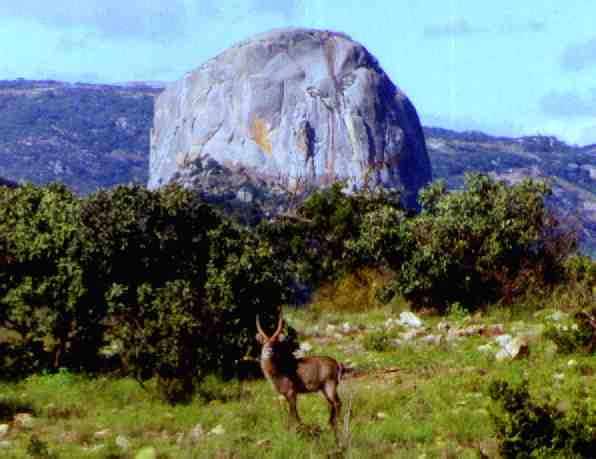Etchplanation or stripping of regolith is believed to be responsible for small to medium granitic protrusion called inselbergs. These inselbergs include bornhardts, whalebacks, tors, nubbins and castle kopjes. Usually, these inselbergs rise abruptly from a vast extensive land called a pediplain or found near each other along hill or slope crests.
Some of these inselbergs such as whalebacks emerge as unweathered basal surfaces. Deep weathering can act along joints underground which creates inselbergs such as tors. They are then exposed to the surface by stripping of regolith (etching). Granitic inselbergs are found mostly in humid and sub-humid tropics, a climate most native to Africa.
Basal surface: An unweathered underground bedrock usually of granitic type.
Crest: A peak or summit of a hill.
Etchplanation: The removal of overlying regolith by erosion exposing underground rocks
Stripping of regolith (etching) after regolith has been produced by deep weathering.
Bornhardt
Bornhardts are one of the commonest granitic inselbergs. Bornhardts are dome shaped rocks rising abruptly from a plain. These plains are a result of regolith stripping or scarp retreat (the latter is rare).
These rocks are usually well-jointed and resistant to weathering
However, when exhumed from deep underground, pressure release can create cracks causing them to be prone to further weathering by other weathering agents.
The continued sub-aerial weathering further breaks down the rocks into other distinct landforms such as tors and castle kopjes. Bornhardts are abundant across the plains of Africa in countries like Zimbabwe, Tanzania and Kenya.


Whalebacks/ Dwala/ Ruware
Whalebacks are gently sloping granitic inselbergs emerging as unweathered bedrock. They are usually emerging bornhardts. Dwalas can be seen protruding in areas such as the Matopos in Zimbabwe.

Tors
Tors are small to medium boulders of rock piling on top of one another resulting from etchplanation. Tors can also be formed from the sub-aerial weathering of bornhardts.
Tors can form intricate balancing rocks e.g. Balancing Rocks in Epworth, Harare, Zimbabwe.

Castle Kopjes
Castle kopjes have a castle-like appearance resulting from surface bornhardt weathering. Castle kopjes also result from tors. NB: castle kopjes can be classified as tors.
Nubbins
Nubbins are small to medium rounded corestones that emerge on top of a small dome (basal surface). Deep weathering acts along joints which creates rounded corestones.
As the dome gets weathered on the surface it gradually gets gentler and the rocks spread apart
